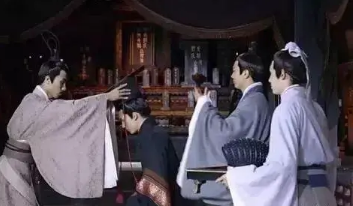In ancient China, men would undergo an important ceremony called the capping ceremony upon reaching adulthood, marking their official entrance into adulthood. During this ceremony, men would wear three hats with different meanings, representing their responsibilities, rights, and status.

The first capping - wearing a kerchief. At the first capping, men would wear a kerchief, their first hat. The kerchief was a common headgear in ancient times, and wearing it represented that the man had grown up and begun to assume social responsibilities. Men at this stage were referred to as "scholars" and were expected to learn various knowledge and skills to prepare for future social life.
The second capping - wearing a hat. At the second capping, men would wear a hat, their second hat. In ancient times, the hat was a symbol of status, and wearing it represented that the man had attained a certain social status and rights. Men at this stage were known as "doctors" and could participate in national political activities, having a greater influence on society.
The third capping - wearing a crown. At the third capping, men would wear a crown, their third hat. The crown was the highest symbol of status in ancient times, and wearing it represented that the man had reached the highest social position. Men at this stage were called "nobles" and were leaders of the country, having a decisive influence on the nation.
In summary, the capping ceremony for ancient men was a complex and solemn process. Through three cappings, men gradually acquired the rights and responsibilities of adulthood, marking their advancement in social status. This process was not only a sign of adulthood but also an important milestone in their life journey.
Disclaimer: The above content is sourced from the internet and the copyright belongs to the original author. If there is any infringement of your original copyright, please inform us and we will delete the relevant content as soon as possible.































